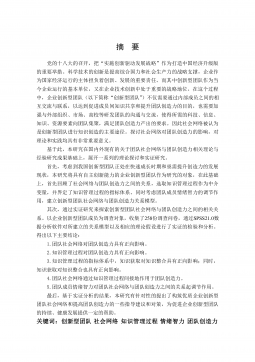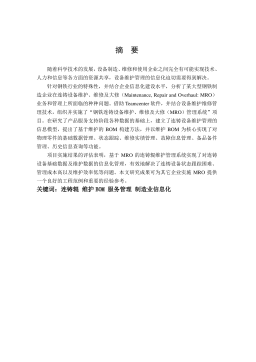布袋送风特性研究及其在大空间建筑中的应用
摘要室内环境的营造对人类舒适、健康起着至关重要的作用,人们对室内环境的关注不再仅局限于舒适性,同时对室内空气品质也提出了要求。各种空调设备和送风形式也随之出现,布袋风管就是其中一种新型的送风方式。布袋风管采用纤维做材料,利用纤维的渗透性来送风,同时又可以在风管上开启不同的小孔或者条缝,来实现射流或者条缝送风以满足不同的气流组织的需要。整个送风可以使室内空气均匀,温度梯度较小,较好地满足舒适性要求;同时,空调风通过布袋风管向室内送风时,由于其自身特有的送风模式和过滤特性,能够对空气中的细微灰尘和细菌有效过滤而获得清洁卫生的新鲜空气。本文对布袋送风特性进行了理论分析,同时以上海理工大学大空间建筑室...
相关推荐
-
USST_Arts_112480743自动生产线的同步维修模型及案例分析VIP免费

 2025-01-09 14
2025-01-09 14 -
USST_Arts_112480745基于供需网特征理念的企业间关系状态研究VIP免费

 2025-01-09 15
2025-01-09 15 -
USST_Arts_112480756 我国城镇化与能源消费结构间关系的研VIP免费

 2025-01-09 20
2025-01-09 20 -
USST_Arts_112490763 企业创新型团队社会网络、知识管理过程及团队创造力关系研究VIP免费

 2025-01-09 13
2025-01-09 13 -
USST_Arts_112490769创新团队执行力影响因素分析VIP免费

 2025-01-09 16
2025-01-09 16 -
USST_Arts_112070649基于团队自反性的科技型企业TMT特征对企业绩效的影响研究VIP免费

 2025-01-09 21
2025-01-09 21 -
TR公司工业机器人市场发展战略研究VIP免费

 2025-01-09 24
2025-01-09 24 -
二氧化碳套管式气冷器的研究VIP免费

 2025-01-09 17
2025-01-09 17 -
非共沸混合物在微通道水平单管内流动沸腾特性VIP免费

 2025-01-09 81
2025-01-09 81 -
基于MRO的连铸辊维护管理系统研究VIP免费

 2025-01-09 11
2025-01-09 11
相关内容
-

USST_Arts_112070649基于团队自反性的科技型企业TMT特征对企业绩效的影响研究
分类:高等教育资料
时间:2025-01-09
标签:无
格式:PDF
价格:15 积分
-

TR公司工业机器人市场发展战略研究
分类:高等教育资料
时间:2025-01-09
标签:无
格式:PDF
价格:15 积分
-

二氧化碳套管式气冷器的研究
分类:高等教育资料
时间:2025-01-09
标签:无
格式:PDF
价格:15 积分
-

非共沸混合物在微通道水平单管内流动沸腾特性
分类:高等教育资料
时间:2025-01-09
标签:无
格式:PDF
价格:15 积分
-

基于MRO的连铸辊维护管理系统研究
分类:高等教育资料
时间:2025-01-09
标签:无
格式:PDF
价格:15 积分






